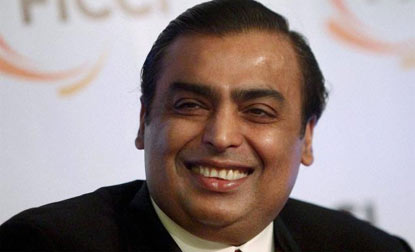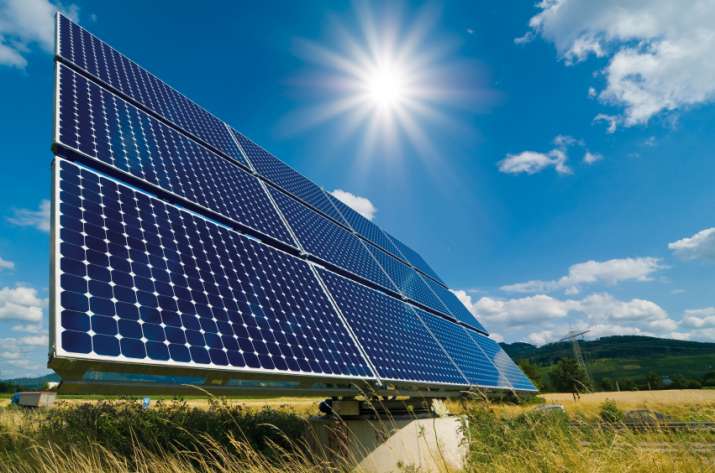
Ambani's mega green energy push to alter pecking order in renewables
The timing, scale and investment appetite in Mukesh Ambani’s sudden green energy push make for an interesting case study.At the 44th Annual General Meeting of Reliance Industries last week, Ambani announced ₹75,000 crore investment in three years in building an end-to-end renewable energy business.

The timing, scale and investment appetite in Mukesh Ambani’s sudden green energy push make for an interesting case study.
At the 44th Annual General Meeting of Reliance Industries last week, Ambani announced ₹75,000 crore investment in three years in building an end-to-end renewable energy business. For the petrochemicals giant to make a huge transition to clean energy is one thing, but for a company the size of RIL to challenge entrenched players – among them the Adanis – is quite another.
At the AGM, Ambani announced that the first part of his green energy plan was to build four gigafactories to manufacture and fully integrate all the critical components of the renewable energy (RE) ecosystem. The word gigafactory, first used by Elon Musk’s Tesla, comes from the unit of measurement ‘giga’ which represents billions.
Hence, by announcing gigafactories, Ambani has already shown intent to create the new energy business at scale. His plan includes one gigafactory each for production of solar energy, energy storage battery, green hydrogen and fuel cells for converting hydrogen into motive and stationary power.
Also read: Jio launches low-cost smartphone with Google; device to hit markets in Sept
RIL’s gigafactory announcement comes just when it is becoming increasingly clear that India is likely to fall short of its own RE target. In April 2015, the Modi government had set a target of more than quadrupling renewable power capacity at 175 gigawatts (GW) by 2022, an ambitious four-fold growth. This target included 100 GW of solar power, 60 GW wind power, 10 GW of bio power (10 GW) and 5 GW of small hydropower.

But by April this year, just a little over half the target of installed RE capacity had been achieved at 95 GW amid murmurs of the ambitious 2022 target having been missed.
An RE industry veteran pointed out that the total RE capacity should also include large hydro projects (which many times are not included in the calculation) and also taking into account the 40GW of capacity in the pipeline, India will have nearly 128 GW capacity by next year, just 15 per cent short of the original target.
The COVID-19 pandemic has been a huge setback in terms of investments and capacity creation in the industry. But reaching the 175 GW RE target is critical for India since this is one of the surest ways of reducing the country’s coal import bill besides also enabling us to reap environmental benefits including reduced pollution etc.
So Ambani’s arrival with mega investment and ambitious capacity creation plans makes the country’s targets look achievable. Then, RE project developers in India often struggle to access financing and then meet prohibitive costs of this financing. Unlike conventional energy, RE technologies often tend to have high capital costs. Here again, Ambani’s promise of bringing in the big bucks comes just at the right time.
Sunil Jain, former CEO of Hero Future Energies, pointed out that India’s target for renewables for 2030 is 450 GW, which means nearly 250 GW capacity needs to be additionally installed in a decade; 25 GW every year. “This is a tall order by any standard, so even a handful of big companies would probably not have been able to take India to this target. RIL’s arrival on the scene is timely and will aid in expanding India’s RE capacity”, he said.
Also read: Economy reviving: India’s petrol, diesel consumption set to go up
Of course, execution of all these ambitions will be keenly watched. Analysts at brokerage IIFL Securities said after the EGM that “RIL’s plans in green energy are likely aimed at de-risking the revenue model; good execution will have wide ramifications on both, sectoral dynamics and the profit pool. However, given inefficiencies in the power sector, we would keenly watch how RIL pursues its ambitions to set up 100 GW solar units by 2030.”
Not only is the timing of RIL’s RE push interesting, it also puts the spotlight on the strategies existing players has chalked up till now. Take the case of Gautam Adani’s green energy ambitions.
In Adani Green Energy’s annual report, Adani has reiterated that he sees the company becoming India’s largest solar power company by 2025 and the world’s largest RE company by 2030. Last year, Adani had also said that he planned to add 5 GW of RE capacity every year for the next decade and build a 25 GW business in the next four years.
With RIL’s entry, will Adani’s ambitious plans get accelerated or will they be reworked? Other big players in the RE industry are Renew Power, Greenko and to some extent, Tata Power.
Jain said that RIL is known to do things on a large scale and it is possible that the new entrant will drive down tariffs going forward, since it will most likely be able to get cheaper funds. Even after the record low lending rate regime due to RBI’s lowering of rates, RE companies have to cough up over 10 per cent interest to get access to funds. RIL, because of its better rating, would likely get funds at lower cost and thus be able to drive down tariffs, going forward.
But will the scenario that played out in the telecom business – where RIL’s entry prompted a mega consolidation in the market as a number of smaller players shut shop, data demand shot through the roof and tariffs crashed – be replicated in the RE business? This remains to be seen. A shake up in the pecking order is very likely though.


